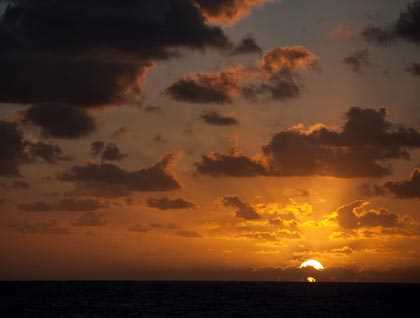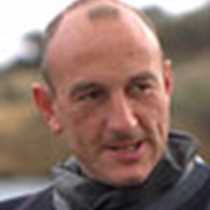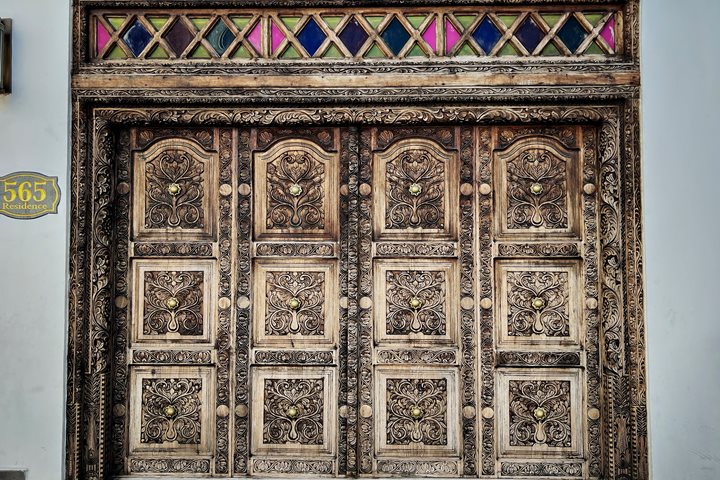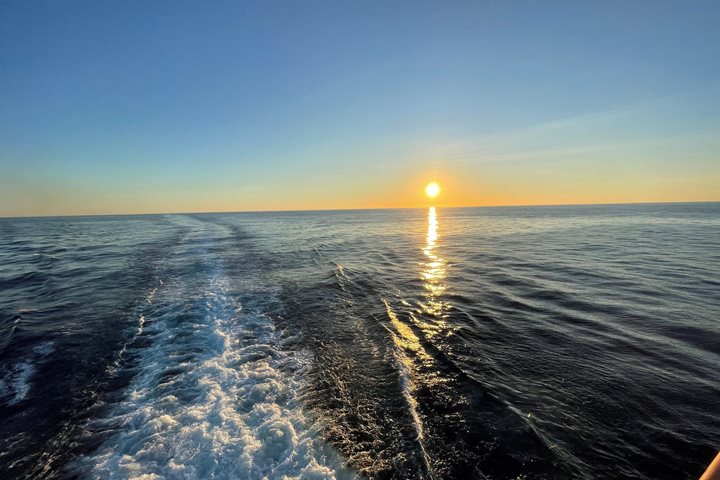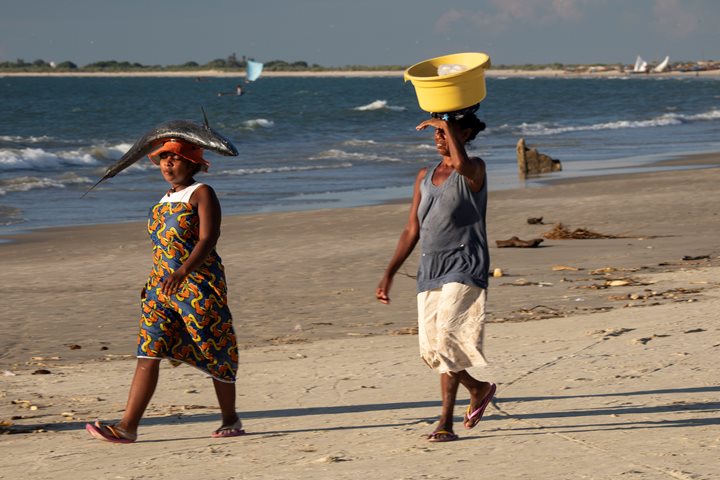Traveling east, as all jet-set travelers know, has the unfortunate side-effect of shortening the duration of the day. However, traveling on a ship has the huge advantage that this change is barely perceptible, except on days where the arbitrary division of our planet into time-zones brutally reminds us that clocks are important to synchronize not only life on board, but also our interactions with our brethren landlubbers. Last night was amputated of a whole hour so we would wake up this morning with Malagasy time on our clocks.
We cannot see the island of Madagascar yet, we will not get there before tomorrow morning, and yet it has entered our lives. Yesterday ended with the viewing of the movie "Island of Lemurs: Madagascar" featuring Dr. Patricia Wright, and some of our dreams were populated by lemurs while the ship rocked us to sleep. The movement of the ship, however, reminded us often that we are on the open sea.
As has been the case most mornings since the beginning of the voyage, the sunrise regaled us with a spectacular display, lighting the underside of the clouds scattered all the way in the distance with the radiant promise of a gorgeous day.
For the past 24 hours, we have been officially in tropical waters, having passed the Tropic of Capricorn on our way to Bazaruto last night. Our heading to Toliara is east-south-east, so we are flirting with the tropic, getting closer to it without passing it. The air is warm and moist, the waters of the Mozambique Channel a deep blue.
Thanks to modern charts, radar, GPS, and sextant, we did not have to worry about getting shipwrecked on this crossing, but a lot of mariners in times of galleons and caravels weren't so fortunate. The main maritime route to bring spices and gold from the Indian subcontinent followed the Mozambique current from north to south, and right in the middle of the deep channel, deadly dangers lurked: Europa Island rises from the sea floor to above the surface. Even more treacherous is Bassas do India, a seamount rising to just under the surface. Sailors that have been there reported that they could stand on top of the reef with water up to their knees at low tide. Many ships in the old days met their demise on these reefs, and the area has many shipwrecks scattered on the bottom.
We passed Europa Island, a French territory, in the early part of the afternoon. We were too far from it to even catch a glimpse of the island, and anyway too engrossed in the talks that occupied us for most of the day: Carl Safina regaled us with a talk about turtles, Chris Rainier about light at the edge of the world, then together with David Cothran presented a photo workshop, Dr. Adel Korkor informed us about Ebola on the other side of the continent, and Dr. Patricia Wright gave the second part of the presentation of the history of Madagascar.

